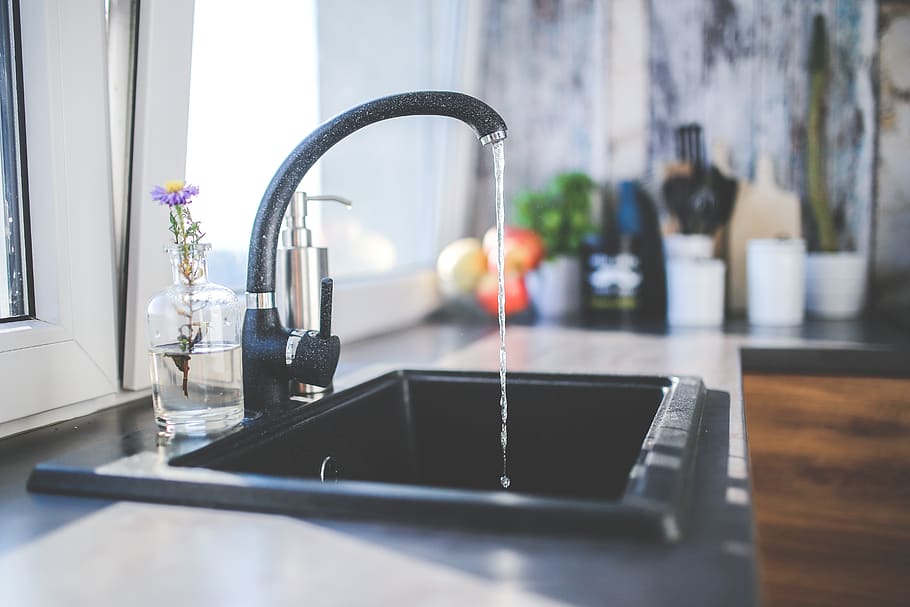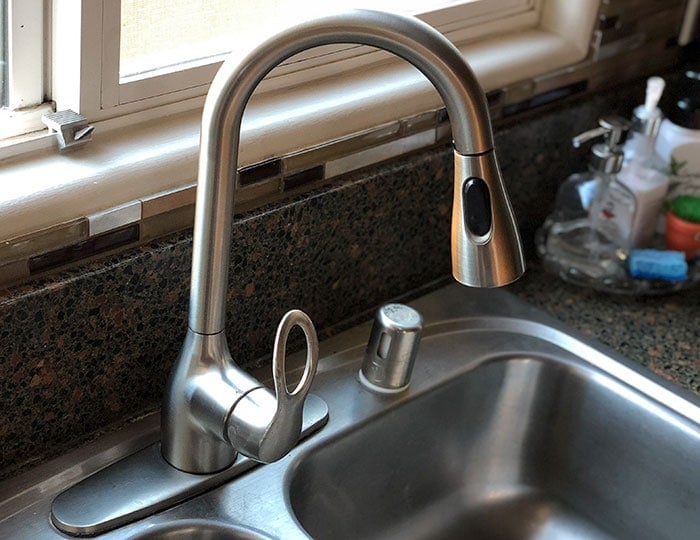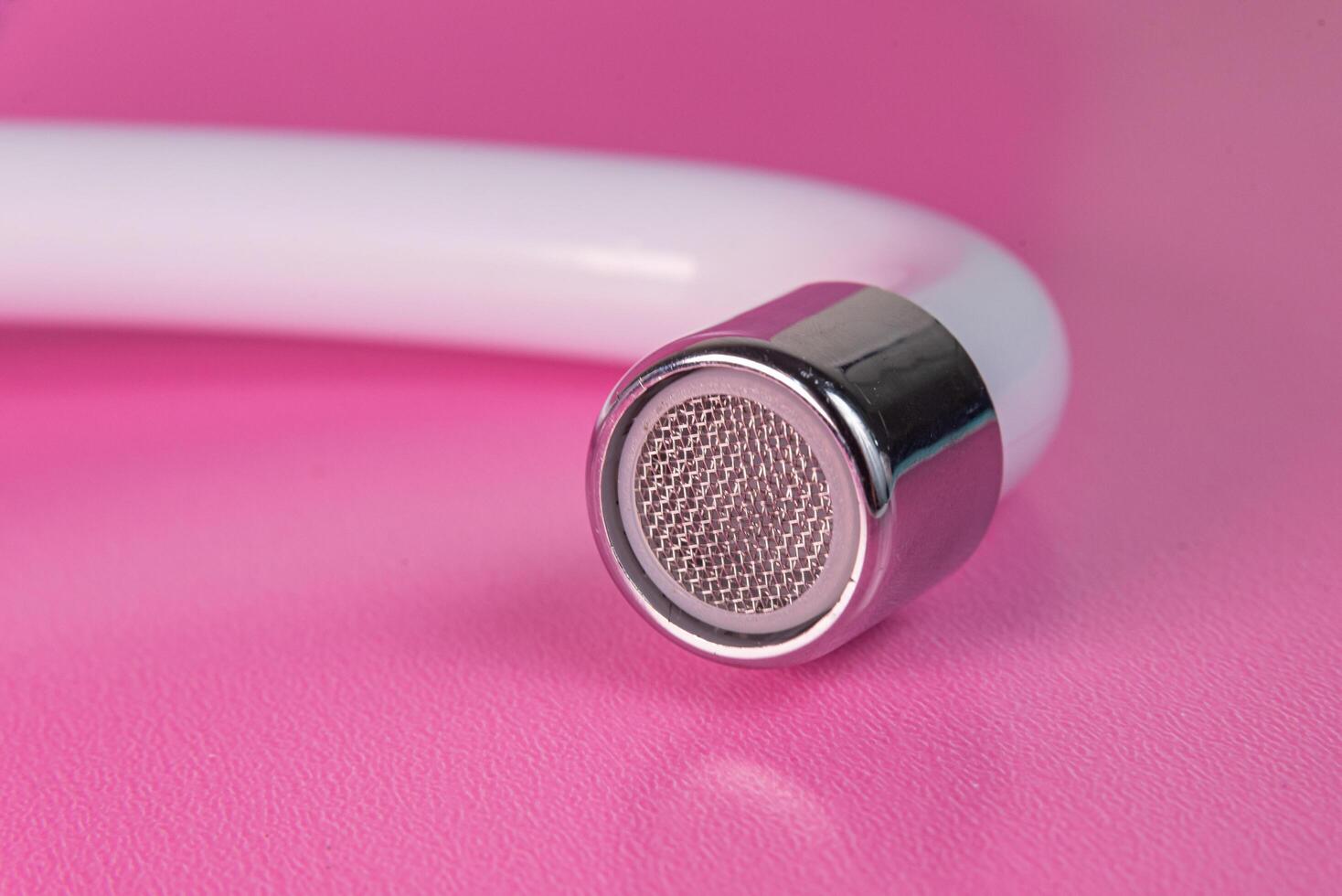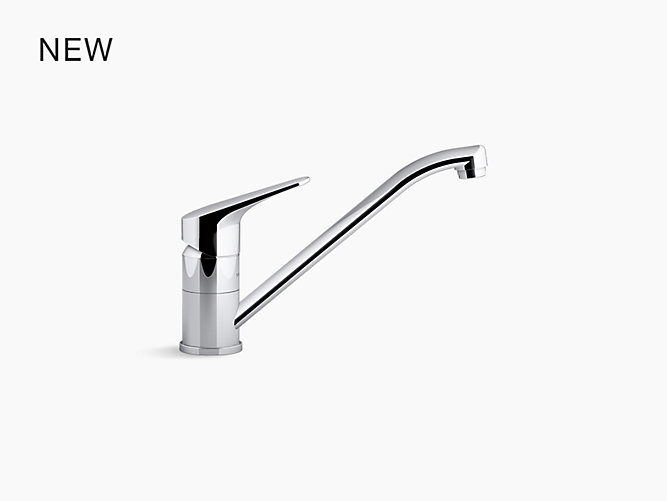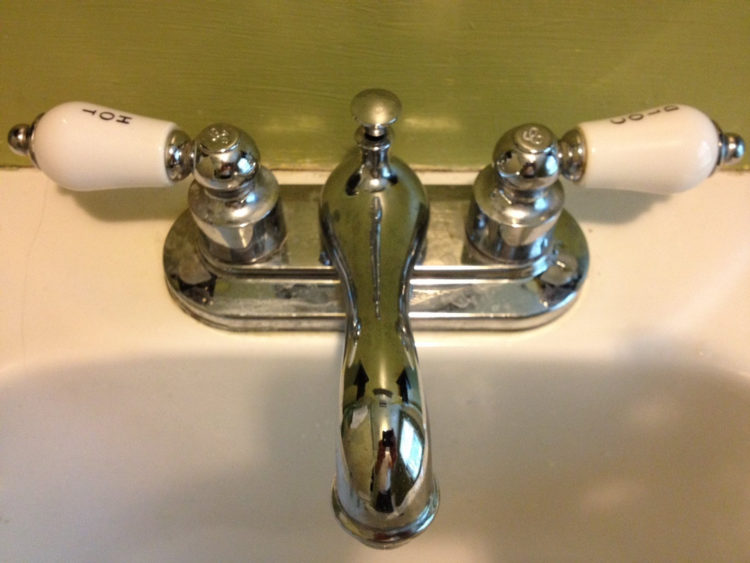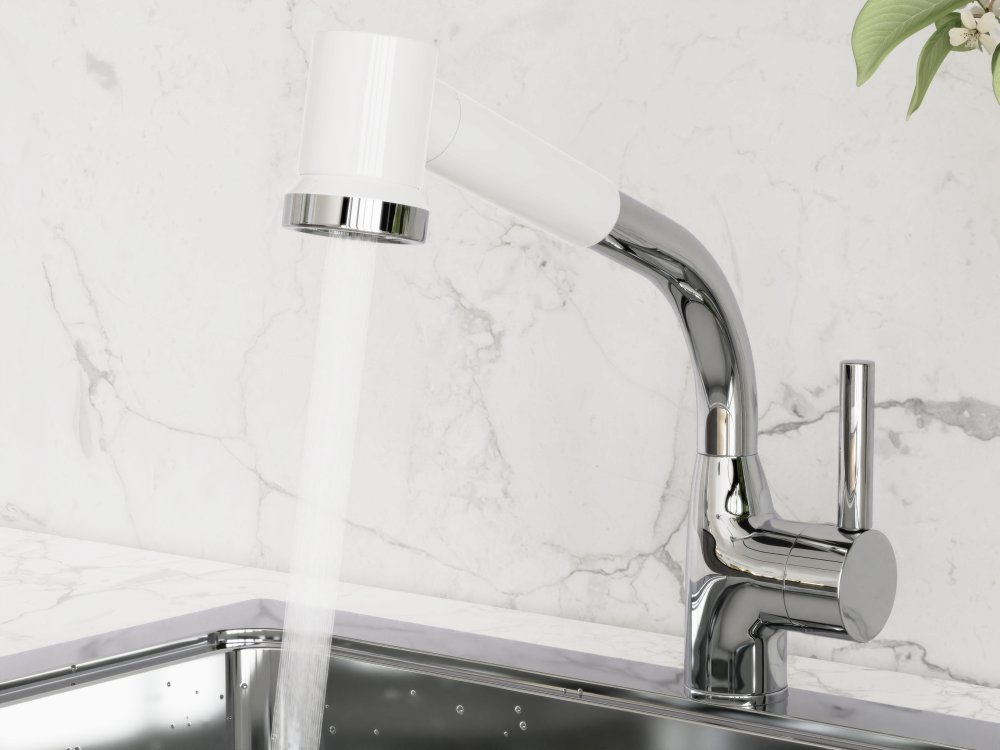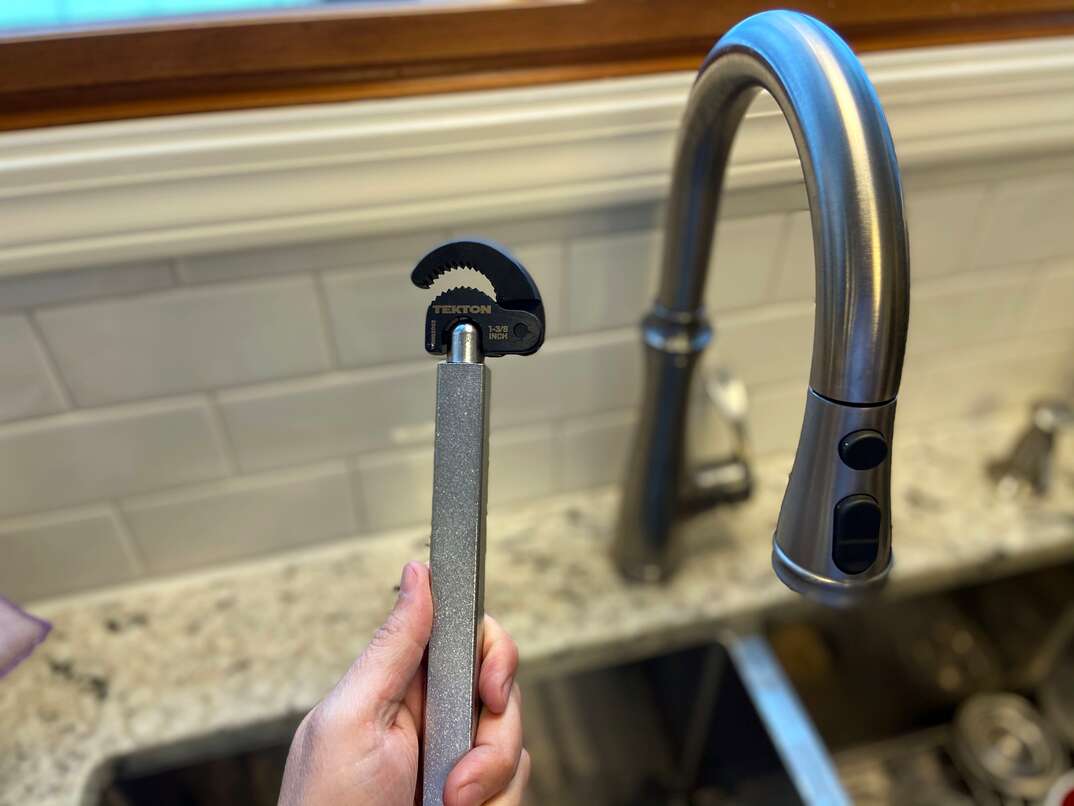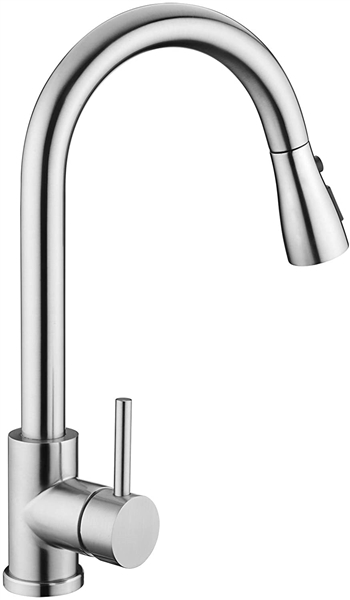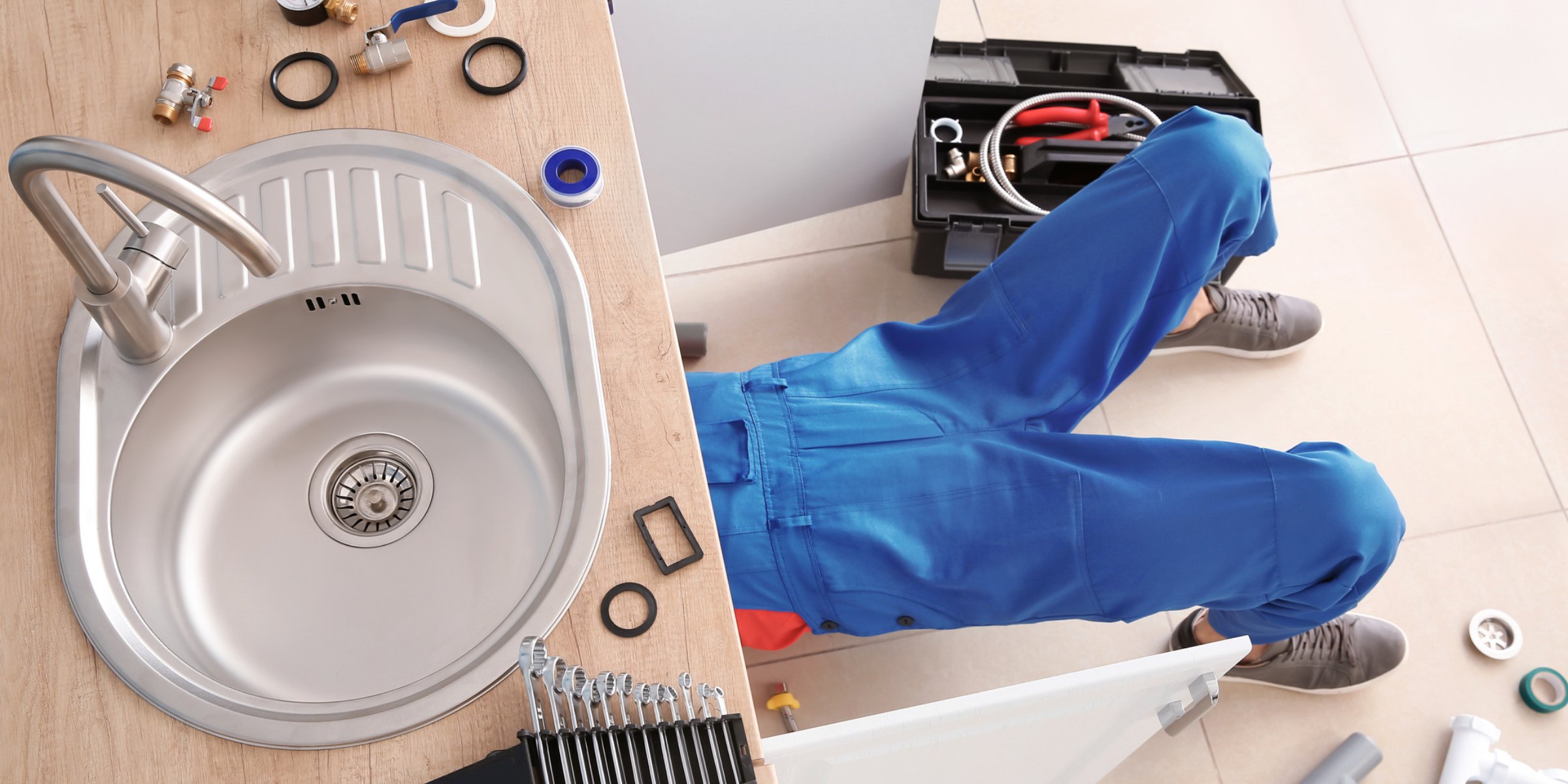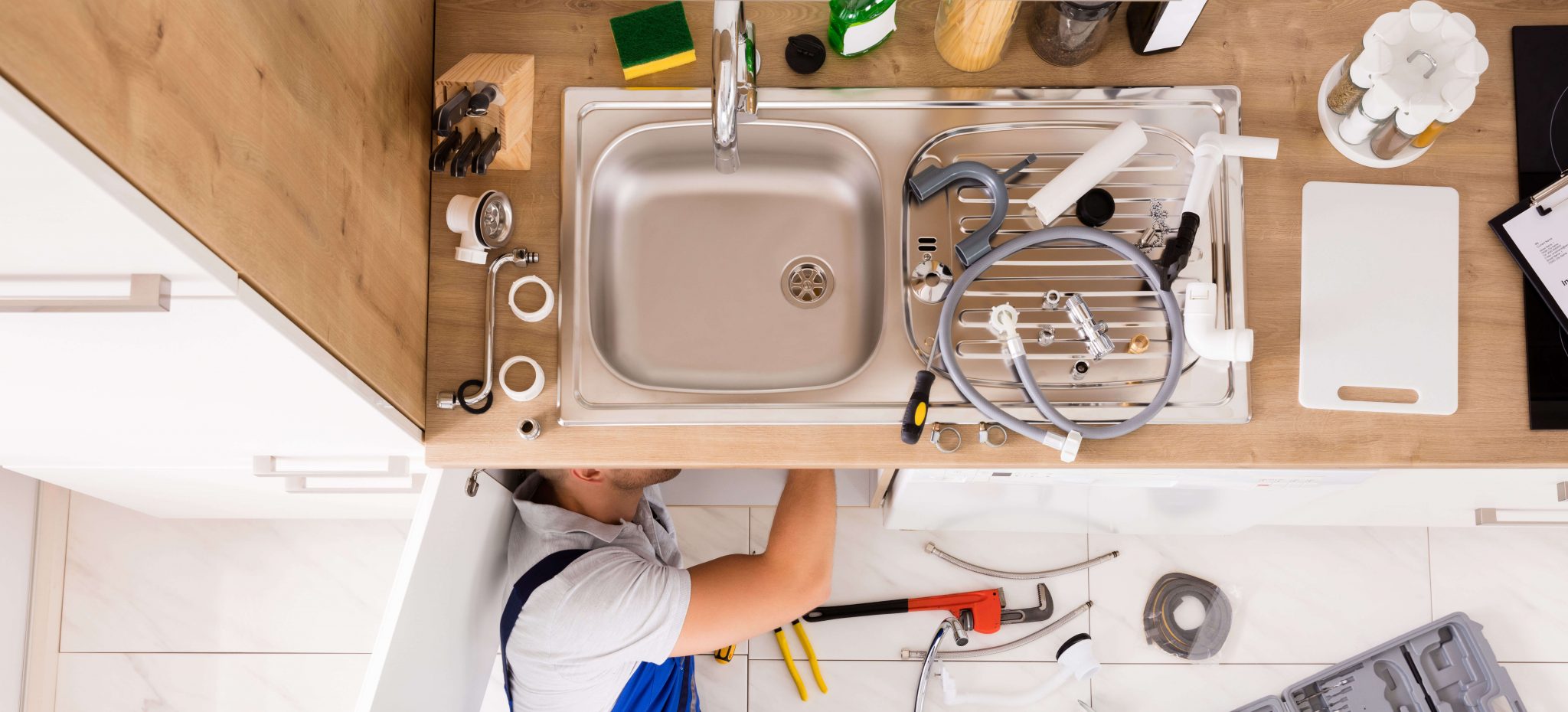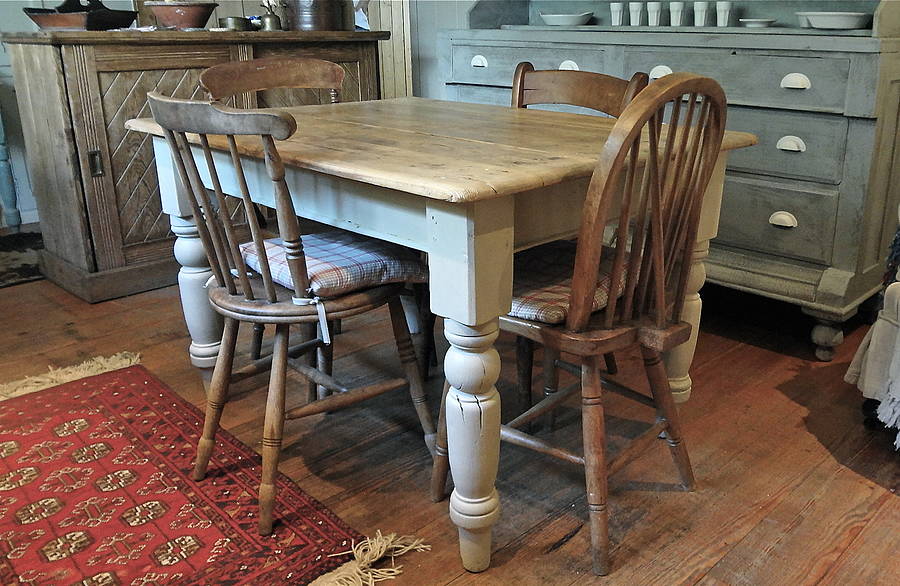Replacing your kitchen sink and faucet may seem like a daunting task, but with the right tools and knowledge, it can be a simple and straightforward process. Follow these 5 easy steps to successfully replace your kitchen sink and faucet: Step 1: Gather Your Tools and Materials Before starting the replacement process, make sure you have all the necessary tools and materials. This includes a new sink and faucet, plumber's putty, a wrench, screwdriver, and silicone sealant. It's also a good idea to have a bucket and towel on hand to catch any water that may spill during the process. Step 2: Shut Off Water Supply Before removing the old sink and faucet, it's important to shut off the water supply. This can usually be done by turning off the shut-off valves located under the sink. If you can't find the shut-off valves, you may need to turn off the main water supply to your home. Step 3: Remove the Old Sink and Faucet Using a wrench, unscrew the nuts and bolts that hold the old sink and faucet in place. Once they are removed, gently lift the sink and faucet out of the counter. Make sure to also remove any old putty or caulk from the sinkhole. Step 4: Install the New Sink and Faucet Place a new layer of plumber's putty around the edges of the sinkhole. Then, carefully lower the new sink and faucet into place. Secure it by tightening the nuts and bolts with a wrench. Step 5: Connect the Plumbing and Turn on the Water Supply Using the instructions provided with your new sink and faucet, connect the plumbing and water lines. Once everything is securely connected, turn the water supply back on and check for any leaks. If there are no leaks, you're all set!1. How to Replace a Kitchen Sink and Faucet in 5 Easy Steps
Like any major home improvement project, timing is key when it comes to replacing your kitchen sink and faucet. Here are a few factors to consider when deciding the best time to replace your kitchen sink and faucet: Budget The cost of replacing a kitchen sink and faucet can vary depending on the type and style you choose. If you're on a tight budget, it may be best to wait until you have enough funds saved up for the project. Schedule Replacing a kitchen sink and faucet can take anywhere from a few hours to a full day, depending on your skill level and the complexity of the project. Make sure you have enough time available to complete the project without feeling rushed. Leaks or Damage If you notice any leaks or damage to your current sink and faucet, it's best to replace them as soon as possible. Ignoring these issues can lead to bigger problems and more expensive repairs down the line. Renovation Plans If you're planning on renovating your kitchen, it may be best to wait until the renovation is complete to replace your sink and faucet. This way, you can choose a sink and faucet that complements the new design of your kitchen.2. The Best Time to Replace Your Kitchen Sink and Faucet
Replacing a kitchen sink and faucet can be a DIY project for those with some basic plumbing knowledge and skills. Here are a few tips and tricks to make the process smoother: Research and Plan Before starting the project, make sure to research and plan beforehand. This includes reading the instructions provided with your new sink and faucet, watching tutorials online, and ensuring you have all the necessary tools and materials. Take Your Time Rushing through the project can lead to mistakes and potential damage to your new sink and faucet. Take your time and follow the steps carefully to ensure a successful replacement. Ask for Help If you're feeling overwhelmed or unsure about any aspect of the project, don't hesitate to ask for help from a friend or family member who has experience with plumbing. It's always better to have an extra set of hands and eyes to make sure everything is done correctly. Properly Dispose of Old Materials Make sure to properly dispose of your old sink and faucet, following your local waste management guidelines. This can help prevent any potential environmental hazards.3. DIY Kitchen Sink and Faucet Replacement: Tips and Tricks
The time it takes to replace a kitchen sink and faucet can vary depending on the complexity of the project and your skill level. On average, it can take anywhere from 2-4 hours for a simple replacement and up to a full day for a more complex one. It's important to set aside enough time to complete the project without feeling rushed.4. How Long Does it Take to R&R a Kitchen Sink and Faucet?
The cost of replacing a kitchen sink and faucet can vary depending on the type and style you choose. On average, the cost can range from $200-$1000, including the cost of the sink, faucet, and any additional materials or labor. It's best to set a budget beforehand and research different options to find the best fit for your needs and budget.5. The Cost of Replacing a Kitchen Sink and Faucet
It's important to keep an eye out for signs that indicate it's time to replace your kitchen sink and faucet. These can include leaks, cracks, rust, and outdated styles. If you're experiencing any of these issues, it's best to replace your sink and faucet to prevent further damage and improve the functionality and aesthetics of your kitchen.6. When to Know it's Time to Replace Your Kitchen Sink and Faucet
With so many options available, it can be overwhelming to choose the right kitchen sink and faucet for your home. Here are a few things to consider when making your decision: Style and Design Choose a sink and faucet that complements the style and design of your kitchen. This can include the material, color, and shape of the sink, as well as the finish and style of the faucet. Functionality Consider your daily needs and habits when choosing a sink and faucet. Do you need a deep sink for washing large pots and pans? Do you prefer a pull-down or pull-out faucet for easier cleaning? These are important factors to consider to ensure the functionality of your new sink and faucet. Budget As mentioned before, the cost of a new sink and faucet can vary greatly. Make sure to set a budget and stick to it when choosing your new sink and faucet.7. How to Choose the Right Kitchen Sink and Faucet for Your Home
Upgrading your kitchen sink and faucet can offer a range of benefits, including: Improved Aesthetics A new sink and faucet can instantly update the look and feel of your kitchen, making it more visually appealing and modern. Increased Functionality Newer sinks and faucets often come with advanced features and technology, making tasks like washing dishes and filling pots easier and more efficient. Prevention of Water Damage Leaks and damaged sinks and faucets can lead to water damage in your kitchen, which can be expensive and time-consuming to repair. Upgrading to a new sink and faucet can help prevent these issues.8. The Benefits of Upgrading Your Kitchen Sink and Faucet
Replacing a kitchen sink and faucet can be a DIY project, but it's important to avoid these common mistakes: Not Turning Off the Water Supply Before starting the replacement process, make sure to turn off the water supply to prevent any water damage or accidents. Not Measuring Correctly Make sure to measure the sinkhole and the new sink and faucet correctly to ensure a proper fit. Skipping Steps Skipping steps or rushing through the process can lead to mistakes and potential damage to your new sink and faucet. Not Properly Securing the Sink and Faucet Make sure to properly secure the sink and faucet to prevent any leaks or damage.9. Common Mistakes to Avoid When Replacing a Kitchen Sink and Faucet
To ensure the longevity and functionality of your new kitchen sink and faucet, it's important to properly maintain them. Here are a few tips: Regularly Clean and Rinse Make sure to regularly clean and rinse your sink and faucet to prevent the buildup of dirt and grime. This can also help prevent the growth of bacteria and mold. Use Mild Cleaners Avoid using harsh chemicals that can damage the material of your sink and faucet. Stick to mild cleaners and avoid scrubbing too hard. Check for Leaks Regularly check for any leaks or damage to your sink and faucet, and address them promptly if you notice any issues. Fix minor issues immediately If you notice any minor issues, such as a loose faucet or a small leak, fix them immediately before they turn into larger and more expensive problems.10. How to Properly Maintain Your Kitchen Sink and Faucet for Longevity
Transform Your Kitchen with a New Sink and Faucet

The Importance of a Functional and Stylish Kitchen
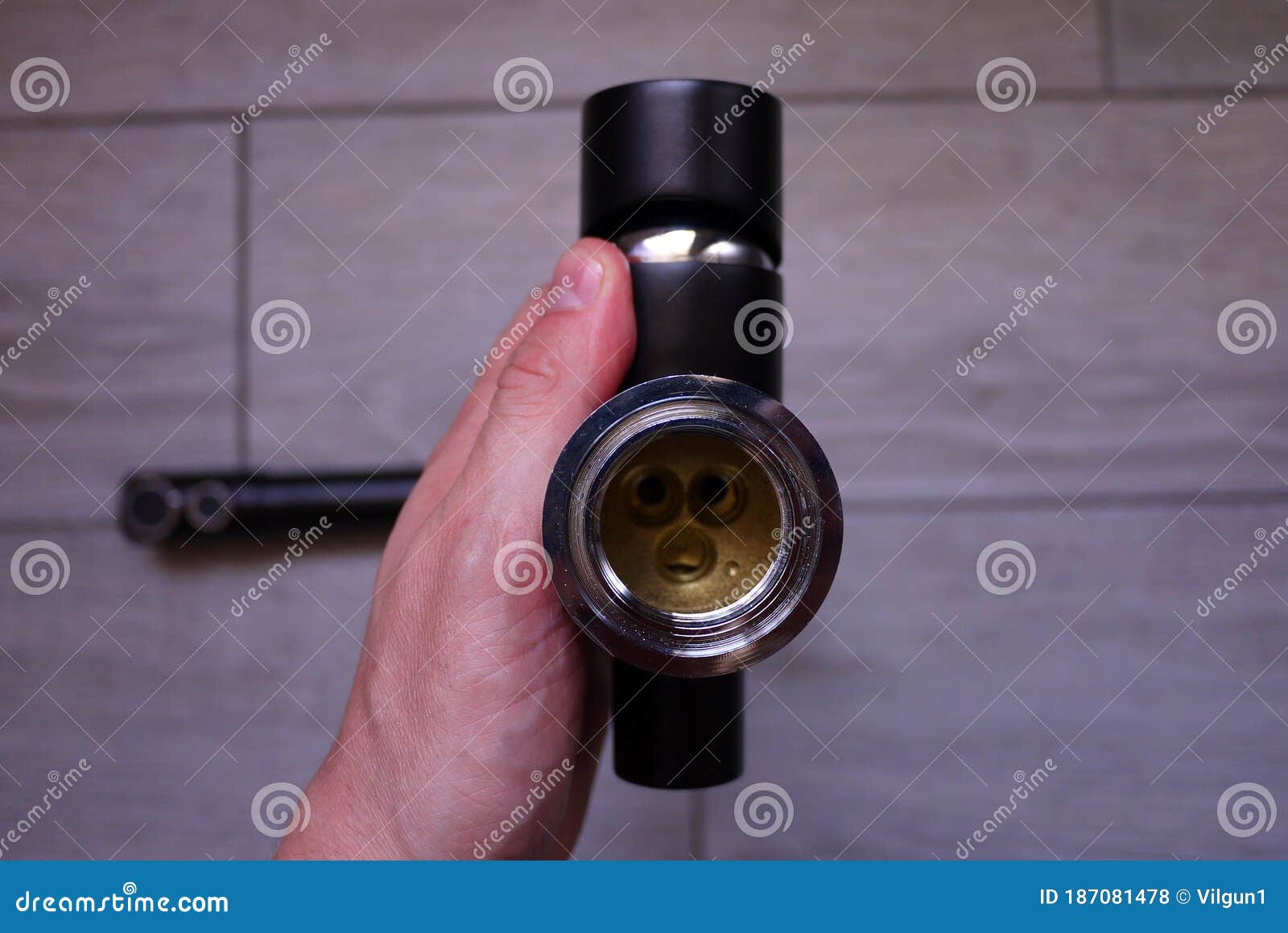 As one of the most used and important rooms in a house, the kitchen plays a vital role in our daily lives. Not only is it a functional space for cooking and preparing meals, but it also serves as a gathering place for family and friends. With such a significant role, it's no wonder that homeowners are constantly looking for ways to enhance and improve their kitchen design. One area that often gets overlooked but can make a significant impact is the kitchen sink and faucet.
Replacing or upgrading your kitchen sink and faucet can not only improve the look of your kitchen but also enhance its functionality and efficiency.
As one of the most used and important rooms in a house, the kitchen plays a vital role in our daily lives. Not only is it a functional space for cooking and preparing meals, but it also serves as a gathering place for family and friends. With such a significant role, it's no wonder that homeowners are constantly looking for ways to enhance and improve their kitchen design. One area that often gets overlooked but can make a significant impact is the kitchen sink and faucet.
Replacing or upgrading your kitchen sink and faucet can not only improve the look of your kitchen but also enhance its functionality and efficiency.
The Benefits of Replacing Your Kitchen Sink and Faucet
 Over time, as we use our kitchen sinks and faucets daily, they can start to show wear and tear. From scratches and stains to leaks and clogs, these issues can not only be unsightly but also affect the overall functionality of your kitchen. By replacing your sink and faucet, you can address these problems and enjoy the following benefits:
- Improved efficiency and functionality:
Old and worn out sinks and faucets can make simple tasks like washing dishes or filling up a pot of water a hassle. With newer models, you can enjoy features like a retractable faucet head or a deeper and wider sink, making your kitchen tasks easier and more efficient.
- Enhanced style and design:
Your sink and faucet can make a significant impact on the overall look of your kitchen. By upgrading to a modern and stylish design, you can give your kitchen a fresh and updated look.
- Better hygiene and cleanliness:
Old and damaged sinks and faucets can harbor bacteria and mold, making it difficult to keep your kitchen clean. By replacing them, you can ensure a more sanitary and hygienic kitchen environment.
Over time, as we use our kitchen sinks and faucets daily, they can start to show wear and tear. From scratches and stains to leaks and clogs, these issues can not only be unsightly but also affect the overall functionality of your kitchen. By replacing your sink and faucet, you can address these problems and enjoy the following benefits:
- Improved efficiency and functionality:
Old and worn out sinks and faucets can make simple tasks like washing dishes or filling up a pot of water a hassle. With newer models, you can enjoy features like a retractable faucet head or a deeper and wider sink, making your kitchen tasks easier and more efficient.
- Enhanced style and design:
Your sink and faucet can make a significant impact on the overall look of your kitchen. By upgrading to a modern and stylish design, you can give your kitchen a fresh and updated look.
- Better hygiene and cleanliness:
Old and damaged sinks and faucets can harbor bacteria and mold, making it difficult to keep your kitchen clean. By replacing them, you can ensure a more sanitary and hygienic kitchen environment.
Choosing the Right Sink and Faucet for Your Kitchen
 When it comes to selecting a new sink and faucet, there are many options to choose from. From materials and styles to sizes and finishes, it can be overwhelming to make the right choice. To ensure you make the best decision for your kitchen, consider the following factors:
- Configuration:
Think about the layout and size of your kitchen when choosing the configuration of your sink and faucet. If you have limited counter space, a single basin sink may be a better option, while a larger kitchen can accommodate a double basin sink.
- Material:
Stainless steel, granite, porcelain, and composite are some common materials used for sinks. Consider the durability, maintenance, and overall look of each option when making your decision.
- Style and finish:
The style and finish of your sink and faucet can greatly impact the overall look of your kitchen. Choose a design and finish that complements your kitchen's aesthetic and adds to its overall appeal.
When it comes to selecting a new sink and faucet, there are many options to choose from. From materials and styles to sizes and finishes, it can be overwhelming to make the right choice. To ensure you make the best decision for your kitchen, consider the following factors:
- Configuration:
Think about the layout and size of your kitchen when choosing the configuration of your sink and faucet. If you have limited counter space, a single basin sink may be a better option, while a larger kitchen can accommodate a double basin sink.
- Material:
Stainless steel, granite, porcelain, and composite are some common materials used for sinks. Consider the durability, maintenance, and overall look of each option when making your decision.
- Style and finish:
The style and finish of your sink and faucet can greatly impact the overall look of your kitchen. Choose a design and finish that complements your kitchen's aesthetic and adds to its overall appeal.
Upgrade Your Kitchen with a New Sink and Faucet
 In conclusion, your kitchen sink and faucet are not just functional elements but also design features that deserve attention and consideration. By upgrading to a new sink and faucet, you can improve the efficiency, style, and cleanliness of your kitchen. With various options to choose from, you can find the perfect sink and faucet to transform your kitchen into a beautiful and functional space. Ready to give your kitchen a refresh? It's time to R&R your kitchen sink and faucet.
In conclusion, your kitchen sink and faucet are not just functional elements but also design features that deserve attention and consideration. By upgrading to a new sink and faucet, you can improve the efficiency, style, and cleanliness of your kitchen. With various options to choose from, you can find the perfect sink and faucet to transform your kitchen into a beautiful and functional space. Ready to give your kitchen a refresh? It's time to R&R your kitchen sink and faucet.













